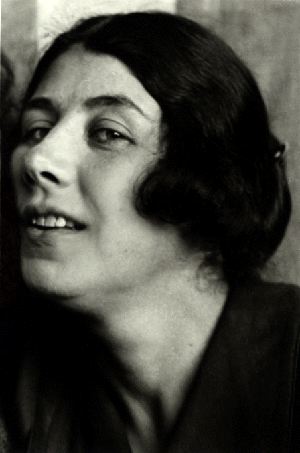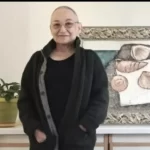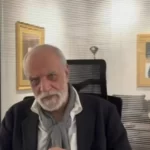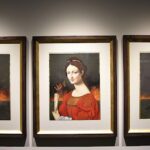
In art history, names like Picasso, Van Gogh, and Dalí have become immortal due to their brilliance, but how many female artists can we remember who changed the course of art with their courage and creativity?
March 8th, International Women’s Day, provides an opportunity to revisit the names that have been overshadowed by the male-dominated art world and the shadows of history—women who, not due to a lack of talent, but due to social, economic, and cultural structures, have remained unseen.
In the Renaissance, Artemisia Gentileschi, despite her genius in painting in the Caravaggio style, was always marginalized because of her gender. In the 19th century, Berthe Morisot and Mary Cassatt, two female Impressionists, remained in the shadows of their male counterparts. In the world of modern art, names like Lyubov Popova and Éliane Delaunay are less heard, despite their undeniable impact on avant-garde art.
But the story of these women is not just a narrative of the past; today, many female artists, especially in closed societies, face challenges in being seen and recognized.
Art history is full of names that have become legends, but behind these names, there have been women who have played significant roles in art movements. However, due to social and cultural reasons, their names have remained in the shadows.
Lyubov Popova: A Pioneer of Constructivism
Lyubov Popova, a 20th-century Russian artist, was one of the leading figures in the Constructivist and Suprematist movements. These two movements, which contributed to the formation of modern art in the early 20th century, had a completely non-representational and abstract approach, emphasizing the combination of geometric shapes, pure colors, and dynamic structures.
Popova, in the tense atmosphere following the Russian Revolution, was searching for an art that could change society. Alongside artists like Kazimir Malevich and Vladimir Tatlin, she turned towards abstraction and became one of the first women to make groundbreaking contributions in this style. Her works combined dynamic shapes, intense colors, and emphasized modular structures. She believed that art should go beyond traditional boundaries and enter everyday life, which led her to work in theater set design, textiles, and advertising posters.
One of her most significant works, Spatial Force Construction, is a combination of color fields and intersecting lines, creating a sense of movement and energy in a purely abstract space. This work exemplifies her structuralist perspective, which gradually extended beyond painting into industrial design and graphics.
Unfortunately, Popova died at the age of 35 from scarlet fever, but her legacy in Russian modern art and Constructivism remains inspiring. While names like Malevich and Tatlin have been highlighted in art history books, Popova’s contribution to this movement remains underrecognized and requires further recognition.
Éliane Delaunay: A Woman in Neoclassicism
Éliane Delaunay, often confused with Eugène Delacroix, was one of the forgotten painters of the Neoclassical style. In the 19th century, when European art oscillated between the Romanticism and Neoclassicism movements, she focused on creating works with classical narratives, adhering to an academic approach and paying close attention to historical details.
Unlike many of her contemporaries who often preferred landscapes and court portraits, Delaunay was drawn to Greek myths and Roman history. In her works, we see a combination of idealized figures, precise symmetry, and rich color schemes, reminiscent of the paintings of Jacques-Louis David.
One of her key works, The Oath in the Temple, depicts a scene from ancient Rome, where a group of citizens swear an oath to the principles of the Republic in the presence of a massive statue. Like many Neoclassical works, this painting emphasizes the grandeur and magnificence of ancient civilizations, while also creating a dramatic atmosphere through masterful lighting and color techniques.
However, unlike her male counterparts, Delaunay never achieved the fame she deserved. As a woman, she had limited opportunities to display her works in formal exhibitions, and many of her paintings remained in private collections. Today, she remains a relatively unknown figure in art history, despite her undeniable influence on later Neoclassical painters.
Why Have Female Artists Been in the Shadows?
The question arises: Why, despite their skill and innovation, have artists like Lyubov Popova and Éliane Delaunay been less recognized than their male counterparts?
One of the main reasons lies in social and cultural restrictions. Until the late 19th century, women were often excluded from formal art education or, if allowed, were prohibited from studying anatomy or working with live models, limiting their ability to master professional techniques.
Ownership and exhibition of works also posed significant challenges. Many galleries and collectors were reluctant to purchase or display works by women. In the 19th and early 20th centuries, women were rarely accepted into prominent art salons, and their works often received less financial value compared to their male counterparts.
Additionally, art criticism and art history were predominantly written by men. Many art historians, either consciously or unconsciously, marginalized women and paid little attention to their contributions. As a result, the names of female artists are less frequently found in textbooks and academic curricula.
Rewriting History: A Necessity for Contemporary Art
Today, the recognition of female artists and revisiting their roles in various movements has become a crucial concern in the art world. Major galleries and museums, such as the Tate Modern and the Metropolitan Museum, have dedicated exhibitions to exploring the works of female artists, and many scholars are working to bring forgotten figures out of history.
However, there is still a long way to go. Recognizing artists like Lyubov Popova and Éliane Delaunay is just a small step in the process of rewriting art history, which has been dominated by male narratives for centuries.
March 8th is not just a reminder of a single day, but an opportunity to ask an important question:
How many more female artists are there whose names we have yet to hear?
Houra Khakdaman / Curator and Art Critic
article links:









